What Is an Electrical Transformer and What Does It Do: Exploring the Heart of Energy Distribution?
Have you ever wondered how electricity from power plants safely reaches your home? The answer lies in a crucial device: the electrical transformer. Without it, our modern electrical grid wouldn’t exist.
An electrical transformer is a device that changes the voltage of electricity. It works by using electromagnetic induction to transfer energy between two or more circuits. Transformers are essential for efficient power transmission and safe electricity use in our homes and businesses.
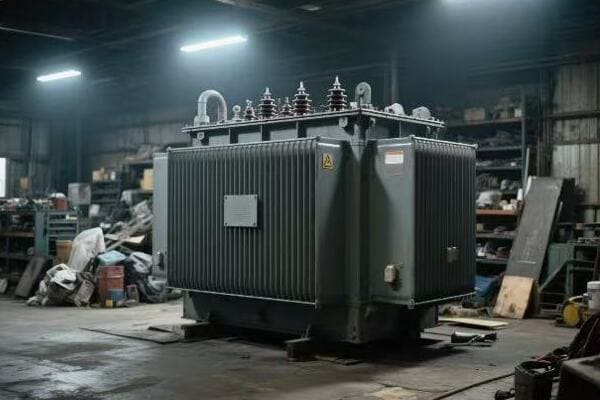
As someone who has worked in the power industry for years, I’ve seen firsthand how transformers shape our electrical systems. Let’s dive deeper into the world of electrical transformers and explore their crucial role in energy distribution.
Defining the Powerhouse: What Exactly Is an Electrical Transformer?
Imagine trying to drink from a fire hose. That’s what using electricity straight from a power plant would be like. Transformers are the devices that make electricity usable for us.
An electrical transformer is a static device that transfers electrical energy from one circuit to another by electromagnetic induction. Its main functions are to increase (step up) or decrease (step down) voltage levels and to isolate circuits.
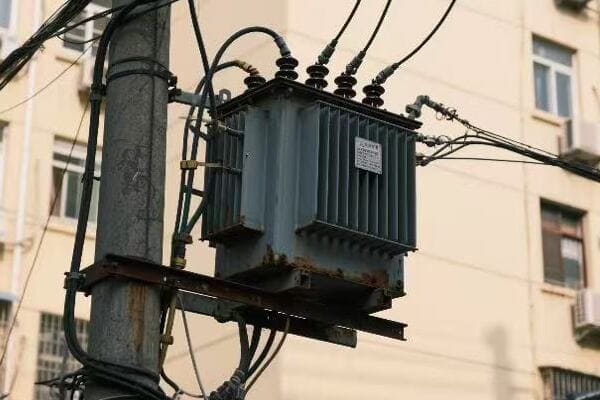
Let me break down the basics of electrical transformers for you, based on my years of experience in the field.
Core Components of an Electrical Transformer
An electrical transformer consists of three main parts:
- Primary Coil: This coil receives the input voltage.
- Secondary Coil: This coil delivers the output voltage.
- Iron Core: This core enhances the magnetic coupling between the coils.
How a Transformer Works
The basic principle of a transformer is simple:
- An alternating current in the primary coil creates a changing magnetic field.
- The iron core concentrates this magnetic field.
- The changing magnetic field induces a voltage in the secondary coil.
- The ratio of turns in the primary and secondary coils determines the voltage change.
Types of Transformers
We can classify transformers based on their primary function:
| Type | Function | Application |
|---|---|---|
| Step-Up | Increases voltage | Power plants to transmission lines |
| Step-Down | Decreases voltage | Substations to homes |
| Isolation | Separates circuits | Safety in electronic devices |
| Autotransformer | Slight voltage adjustments | Voltage regulation |
Why Transformers Matter
Transformers are crucial for our electrical grid. They allow us to:
- Transmit power efficiently over long distances by stepping up voltage.
- Use electricity safely in our homes by stepping down voltage.
- Isolate different parts of electrical systems for safety and control.
In my work designing power systems, I’ve seen how vital transformers are. Without them, we couldn’t have the widespread, safe electrical systems we rely on today. They’re the unsung heroes of our electrified world.
The Science Behind the Switch: How Transformers Manipulate Voltage and Current?
Have you ever wondered how transformers can change voltage and current levels so precisely? The answer lies in some fascinating scientific principles and mathematical relationships.
Transformers manipulate voltage and current using electromagnetic induction. They change voltage levels based on the ratio of turns in their primary and secondary coils. The voltage ratio is directly proportional to the turns ratio, while the current ratio is inversely proportional.
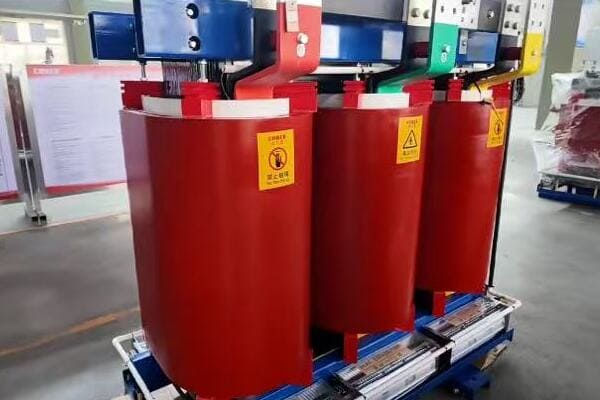
Let me break down the science behind transformer operation, based on my experience in the field.
Electromagnetic Induction: The Foundation
Electromagnetic induction is the key principle behind transformer operation. Here’s how it works:
- A changing magnetic field creates an electric field.
- This electric field can create a current in a nearby conductor.
- In a transformer, the changing current in the primary coil creates a changing magnetic field.
- This changing magnetic field induces a voltage in the secondary coil.
The Transformer Equation
The fundamental relationship in a transformer is described by the transformer equation:
Vs / Vp = Ns / Np
Where:
- Vs = Secondary Voltage
- Vp = Primary Voltage
- Ns = Number of turns in Secondary Coil
- Np = Number of turns in Primary Coil
This equation shows that the ratio of voltages is equal to the ratio of turns in the coils.
Current Transformation
The current transformation follows an inverse relationship:
Ip / Is = Ns / Np
Where:
- Ip = Primary Current
- Is = Secondary Current
This relationship ensures that power is conserved (ignoring losses).
Power Conservation
In an ideal transformer, the power in equals the power out:
Vp Ip = Vs Is
This equation is crucial for understanding how transformers maintain energy balance.
Practical Applications
Here’s how these principles play out in real-world scenarios:
| Scenario | Turns Ratio (Ns/Np) | Voltage Ratio (Vs/Vp) | Current Ratio (Ip/Is) |
|---|---|---|---|
| Step-Up | > 1 | > 1 | < 1 |
| Step-Down | < 1 | < 1 | > 1 |
| Isolation | = 1 | = 1 | = 1 |
In my work, I’ve seen how these scientific principles guide transformer design:
- Voltage Requirements: We determine the turns ratio based on the required voltage transformation.
- Current Capacity: We size the wire gauge based on the expected current in each coil.
- Power Rating: We ensure the transformer can handle the required power transfer.
Understanding these scientific principles is key to grasping how transformers work. It’s fascinating how these basic laws of physics enable devices that are so crucial to our modern electrical systems.
Transformers in Action: Key Roles in Power Generation, Transmission, and Distribution?
Have you ever stopped to think about the journey electricity takes from a power plant to your home? Transformers play a crucial role at every step of this journey.
Transformers are essential in power generation, transmission, and distribution. At power plants, they step up voltage for efficient long-distance transmission. In substations, they step down voltage for local distribution. Finally, pole-mounted transformers further reduce voltage for safe home use.

Let me walk you through the roles of transformers in our power systems, based on my years of experience in the field.
Power Generation: The Journey Begins
At power plants, electricity starts its journey:
- Generator Voltage: Typically 11kV to 25kV.
- Step-Up Transformer: Increases voltage to 155kV-765kV for transmission.
- Purpose: Higher voltage reduces power losses over long distances.
Transmission: The Long-Distance Journey
Transformers play a crucial role in long-distance power transmission:
- High Voltage Transmission: Typically 155kV to 765kV.
- Substations: Use transformers to adjust voltage for different transmission lines.
- HVDC Converters: Special transformers used in High Voltage Direct Current systems.
Sub-transmission: The Middle Mile
Sub-transmission systems bridge the gap between transmission and distribution:
- Voltage Levels: Typically 33kV to 155kV.
- Substations: Use transformers to step down voltage from transmission levels.
- Purpose: Supplies power to distribution substations in cities and industrial areas.
Distribution: Bringing Power to Neighborhoods
Distribution systems deliver power to end-users:
- Primary Distribution: Typically 4kV to 33kV.
- Distribution Transformers: Step down voltage to 120V/240V for residential use.
- Pole-mounted Transformers: Common sight in many neighborhoods.
Transformer Applications Across the Power System
Let’s summarize the applications:
| Stage | Transformer Type | Voltage Change | Purpose |
|---|---|---|---|
| Generation | Step-Up | 20kV to 765kV | Enable long-distance transmission |
| Transmission | Step-Up/Step-Down | 155kV to 765kV | Efficient power transfer |
| Sub-transmission | Step-Down | 765kV to 33kV | Supply distribution substations |
| Distribution | Step-Down | 33kV to 120/240V | Deliver power to end-users |
In my work across these stages of the power system, I’ve encountered various challenges:
- Efficiency: We’re constantly working to reduce losses, especially in large transformers.
- Reliability: Transformers must operate continuously for years without failure.
- Environmental Concerns: We’re developing more eco-friendly insulating materials and cooling methods.
- Smart Grid Integration: Modern transformers are being equipped with sensors and communication capabilities.
Understanding the roles of transformers across the power system gives us a new appreciation for these often-overlooked devices. They’re the key players in ensuring that the electricity generated at distant power plants safely and efficiently reaches our homes and businesses.
Beyond the Basics: Exploring Different Types of Transformers and Their Applications?
Did you know that not all transformers are created equal? The world of transformers is diverse, with each type serving a specific purpose in our electrical systems.
Transformers come in various types, each designed for specific applications. These include power transformers for electricity transmission, distribution transformers for local power delivery, instrument transformers for measurement, and special types like autotransformers and isolation transformers for unique applications.
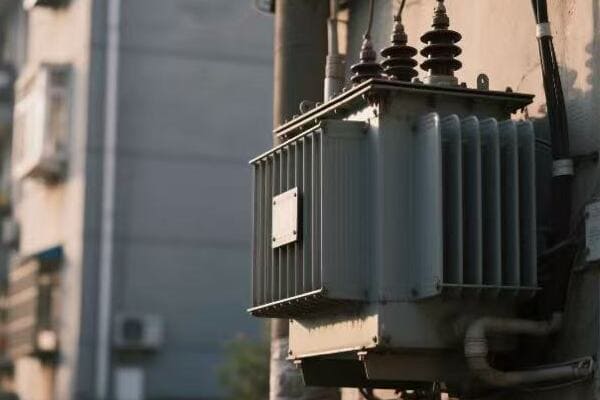
Let me guide you through the different types of transformers I’ve encountered in my career, and explain how each plays a crucial role in our power systems.
Power Transformers: The Backbone of Transmission
Power transformers are the giants of the transformer world. Here’s what you need to know:
- Function: They handle large amounts of electrical power in generation and transmission systems.
- Voltage Levels: Typically operate at voltages above 33kV.
- Efficiency: Designed for very high efficiency, often above 99%.
- Cooling: Often use oil for insulation and cooling.
Distribution Transformers: Bringing Power to Your Neighborhood
Distribution transformers are the workhorses of power distribution. Let’s break them down:
- Function: They reduce voltage from distribution levels to levels suitable for end-users.
- Voltage Levels: Typically step down from 4kV-33kV to 120V/240V for residential use.
- Location: Found on utility poles or in ground-mounted enclosures.
- Design: Often designed for lower cost and easier maintenance than power transformers.
Instrument Transformers: Measuring and Protecting
Instrument transformers are the eyes and ears of our power systems:
- Types: Current transformers (CTs) and potential transformers (PTs).
- Function: They step down current or voltage for measurement and protection devices.
- Accuracy: Highly accurate for precise measurements.
- Applications: Used in metering, relaying, and control circuits.
Special Types of Transformers
There are several special types of transformers for unique applications:
- Autotransformers: Use a single winding for both primary and secondary. Efficient for small voltage changes.
- Isolation Transformers: Provide electrical isolation between circuits. Common in medical and test equipment.
- Rectifier Transformers: Designed to supply power to rectifiers in high-voltage DC transmission systems.
- Phase-Shifting Transformers: Control power flow in transmission systems by changing phase angle.
Comparison of Transformer Types
Let’s compare these types:
| Type | Primary Use | Voltage Levels | Key Feature |
|---|---|---|---|
| Power | Transmission | >33kV | High efficiency |
| Distribution | Local power delivery | 4kV-33kV to 120V/240V | Cost-effective |
| Instrument | Measurement | Various | High accuracy |
| Autotransformer | Voltage adjustment | Various | Single winding |
| Isolation | Circuit separation | Various | Electrical isolation |
In my work designing and specifying transformers, choosing the right type is crucial. Here are some factors I consider:
- Application: What’s the primary function needed?
- Voltage Levels: What are the input and required output voltages?
- Power Rating: How much power needs to be transformed?
- Environment: Where will the transformer be installed?
- Efficiency: How important is minimizing losses?
- Cost: What’s the budget for the project?
Understanding the different types of transformers and their applications is essential for creating efficient and reliable power systems. Each type has its strengths, and using the right transformer for the job can make a significant difference in system performance and safety.
Powering Our World: The Impact of Transformers on Grid Efficiency and Reliability?
Have you ever wondered how our power grid stays stable despite constantly changing demands? Transformers play a crucial role in maintaining this delicate balance and ensuring the efficiency and reliability of our electrical systems.
Transformers significantly impact grid efficiency and reliability by enabling efficient power transmission, regulating voltage levels, and providing system flexibility. They reduce power losses, help maintain power quality, and enable the integration of renewable energy sources into the grid.
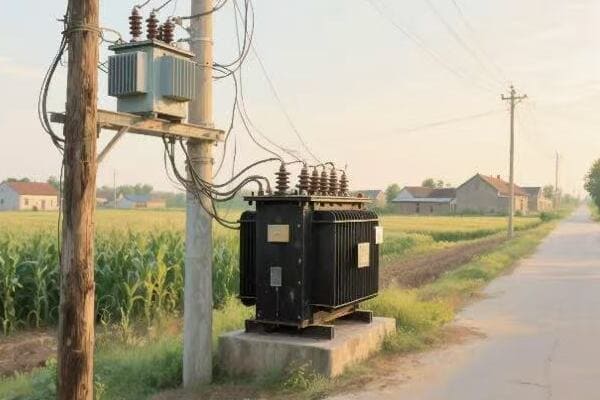
Let me share some insights from my experience about how transformers contribute to grid efficiency and reliability.
Enhancing Transmission Efficiency
Transformers are key to efficient power transmission:
- Step-Up Transformers: By increasing voltage for transmission, they significantly reduce power losses.
- High Voltage Transmission: Enables power to be transmitted over long distances with minimal losses.
- Reduced Current: Higher voltage means lower current for the same power, reducing I²R losses in transmission lines.
Maintaining Voltage Stability
Transformers play a crucial role in voltage regulation:
- On-Load Tap Changers: Allow transformers to adjust voltage ratios while in operation.
- Voltage Control: Help maintain voltage within acceptable limits across the grid.
- Reactive Power Management: Some transformers can provide or absorb reactive power, aiding voltage stability.
Improving Power Quality
Transformers contribute to overall power quality:
- Harmonic Mitigation: Specially designed transformers can help reduce harmonics in the power system.
- Isolation: Transformers can isolate sensitive loads from power quality issues in the main grid.
- Phase Shifting: Some transformers can adjust phase angles to optimize power flow.
Enabling System Flexibility
Transformers provide flexibility to the power system:
- Interconnection: Allow different voltage levels to be interconnected, enabling a flexible grid structure.
- Load Management: Distribution transformers can be sized and located to optimize load distribution.
- Renewable Integration: Special transformers help integrate variable renewable energy sources into the grid.
Enhancing System Reliability
Transformers are crucial for system reliability:
- Redundancy: Multiple transformers can be used to provide backup in case of failures.
- Fault Isolation: Transformers can help isolate faults, preventing them from affecting the entire system.
- Monitoring and Diagnostics: Modern transformers often include sensors for real-time monitoring and predictive maintenance.
Impact of Transformers on Grid Performance
Let’s summarize the impact:
| Aspect | How Transformers Help | Benefit to Grid |
|---|---|---|
| Efficiency | Enable high-voltage transmission | Reduced power losses |
| Voltage Stability | Provide voltage regulation | Consistent power quality |
| Power Quality | Mitigate harmonics and provide isolation | Improved system performance |
| Flexibility | Allow interconnection of different voltage levels | Adaptable grid structure |
| Reliability | Enable redundancy and fault isolation | Increased system uptime |
In my work optimizing power systems, I’ve seen how crucial transformers are to grid performance. Here are some real-world considerations:
- Efficiency vs. Cost: More efficient transformers often have a higher upfront cost but lower lifetime operating costs.
- Smart Grid Integration: Modern transformers are being equipped with sensors and communication capabilities for better grid management.
- Environmental Concerns: We’re developing more eco-friendly transformer designs, including better cooling methods and biodegradable insulating fluids.ids are facing challenges with aging transformer fleets, requiring careful maintenance and replacement strategies.
- Renewable Energy Integration: Transformers are being adapted to handle the variable nature of renewable energy sources.
Understanding the impact of transformers on grid efficiency and reliability is crucial for anyone interested in the future of our energy systems. These devices, often overlooked, are at the forefront of our efforts to create a more reliable, efficient, and sustainable power grid.
Future Trends in Transformer Technology
Looking ahead, I see several exciting developments in transformer technology that will further enhance grid performance:
-
Solid-State Transformers: These combine power electronics with traditional transformer principles for more flexible power control and improved efficiency.
-
High-Temperature Superconducting Transformers: These promise near-zero resistance and very low losses, potentially revolutionizing power transmission.
-
AI and Machine Learning Integration: Advanced analytics will enable predictive maintenance and optimized transformer operation.
-
Nanotechnology in Transformer Design: Nanomaterials could lead to more efficient and compact transformer cores.
-
Biodegradable Transformer Fluids: These environmentally friendly alternatives to traditional transformer oil are becoming more common.
As we move towards a more sustainable and resilient energy future, transformers will continue to play a pivotal role. Their ability to efficiently and reliably manage power flow will be crucial in integrating renewable energy sources, supporting electric vehicle charging infrastructure, and enabling smart grid technologies.
In my work, I’m excited to be part of this evolution. Whether it’s designing more efficient transformers, implementing smart monitoring systems, or exploring new materials, the field of transformer technology is constantly advancing. It’s a reminder that even as we rely on principles discovered nearly two centuries ago, we’re always finding new ways to improve and innovate.
Conclusion
Electrical transformers are the unsung heroes of our power systems. They play a crucial role in voltage transformation, efficient power transmission, and maintaining grid reliability. From power plants to our homes, transformers are essential for our modern electrified world.
Free CHBEB Transformer Catalog Download
Get the full range of CHBEB transformers in one catalog.
Includes oil-immersed, dry-type, pad-mounted, and custom solutions.
Quick Message
Request A free quote
We'd like to work with you
- +86 15558785111
- [email protected]
- +86 15558785111
What We Do
CHINA BEI ER BIAN (CHBEB) GROUP, with 218 million in registered capital, originated from Beijing Beierbian Transformer Group. Headquartered in Beijing for R&D, it operates major production bases in Nanjing and Yueqing, producing high-quality products.
Latest Product
address
BeiJing
No 3,RongJing East Road,BeiJing Economic Technological Development Area,BeiJing,China
JiangSu
No 7️Xiangfeng Road,Jiangning,NanJing,JiangSu,China
WenZhou
No.211, Wei 16 Road, Industrial Zone, Yueqing, Wenzhou, Zhejiang, China.
XiangYang Industrial Zone ,YueQing,WenZhou,ZheJiang,China
contact us
- [email protected]
- +86 13057780111
- +86 13057780111
- +86 15558785111
Copyright © Bei Er Bian Group


